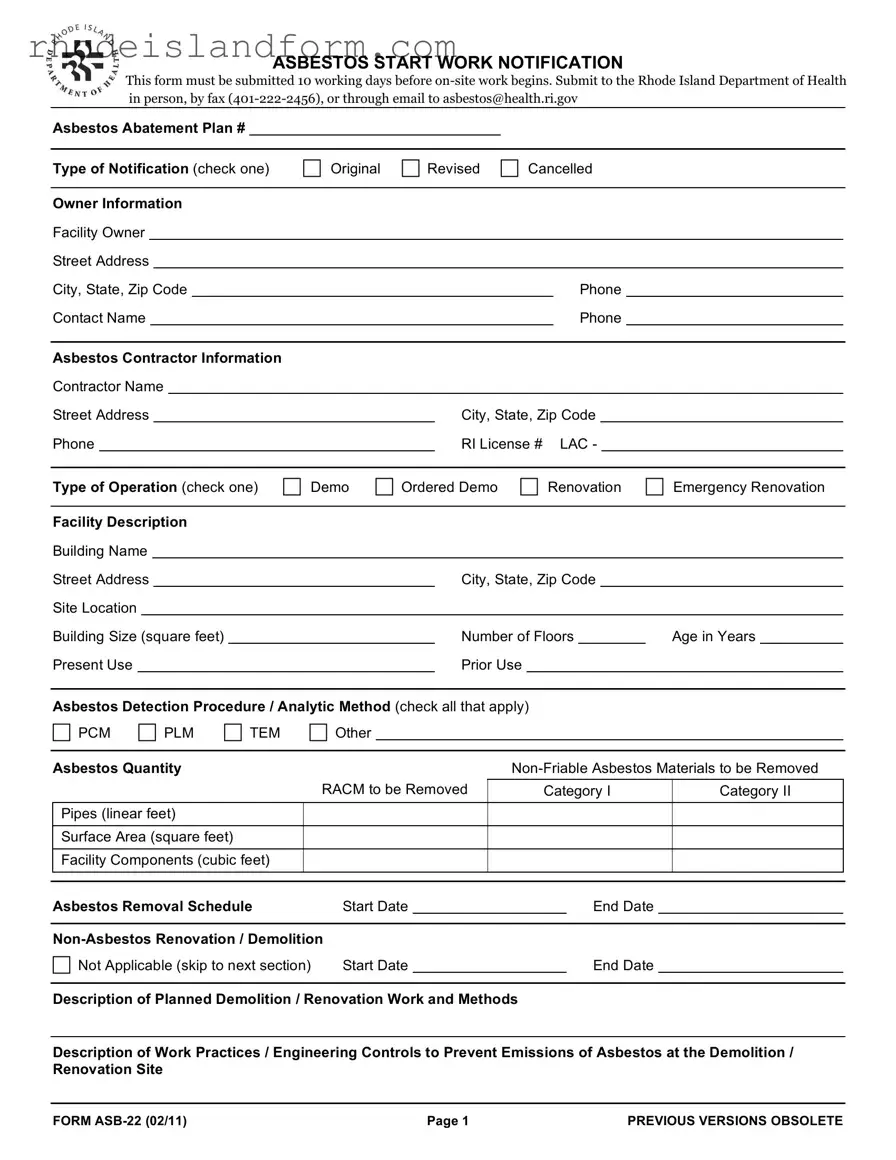What is the purpose of the Rhode Island ASB-22 form?
The Rhode Island ASB-22 form, also known as the Asbestos Start Work Notification, serves a crucial role in managing public health and safety during construction projects. It is specifically designed to inform the Rhode Island Department of Health about any upcoming projects involving asbestos abatement. By requiring this notification 10 working days before on-site work begins, the form helps ensure that all asbestos removal work is conducted in a manner that minimizes the release of asbestos fibers, protecting both workers and the general public.
Who is required to submit the ASB-22 form, and how can it be submitted?
All contractors planning to undertake asbestos abatement in Rhode Island must submit the ASB-22 form. This requirement covers a range of operations, including demolition, renovation, and emergency renovations where asbestos is present. The form can be submitted to the Rhode Island Department of Health in three ways: in person, by fax to 401-222-2456, or through email at asbestos@health.ri.gov. This flexibility ensures that the necessary notifications can be made conveniently and in compliance with state regulations.
What information is required on the ASB-22 form?
The ASB-22 form collects detailed information about the asbestos abatement project to ensure a comprehensive understanding of the scope and safety measures. Required details include the asbestos abatement plan number, type of notification, owner and contractor information, facility description, asbestos detection procedure and quantity, asbestos removal schedule, and details about non-asbestos renovation or demolition, if applicable. Additionally, waste transporter and disposal site information must be provided, along with certifications by the building owner or representative affirming compliance with regulations and the accuracy of the information submitted.
What happens if emergency renovations are needed?
In the case of sudden, unexpected events that necessitate emergency renovations, the ASB-22 form accommodates such situations under its "Emergency Renovations" section. Contractors must describe the date and nature of the event, explain how it caused unsafe conditions or potential for equipment damage or unreasonable financial burden, and detail procedures to follow if unexpected asbestos is found or non-friable asbestos becomes hazardous. This section ensures that even in emergencies, there are clear protocols for handling asbestos safely and in accordance with Rhode Island regulations.


